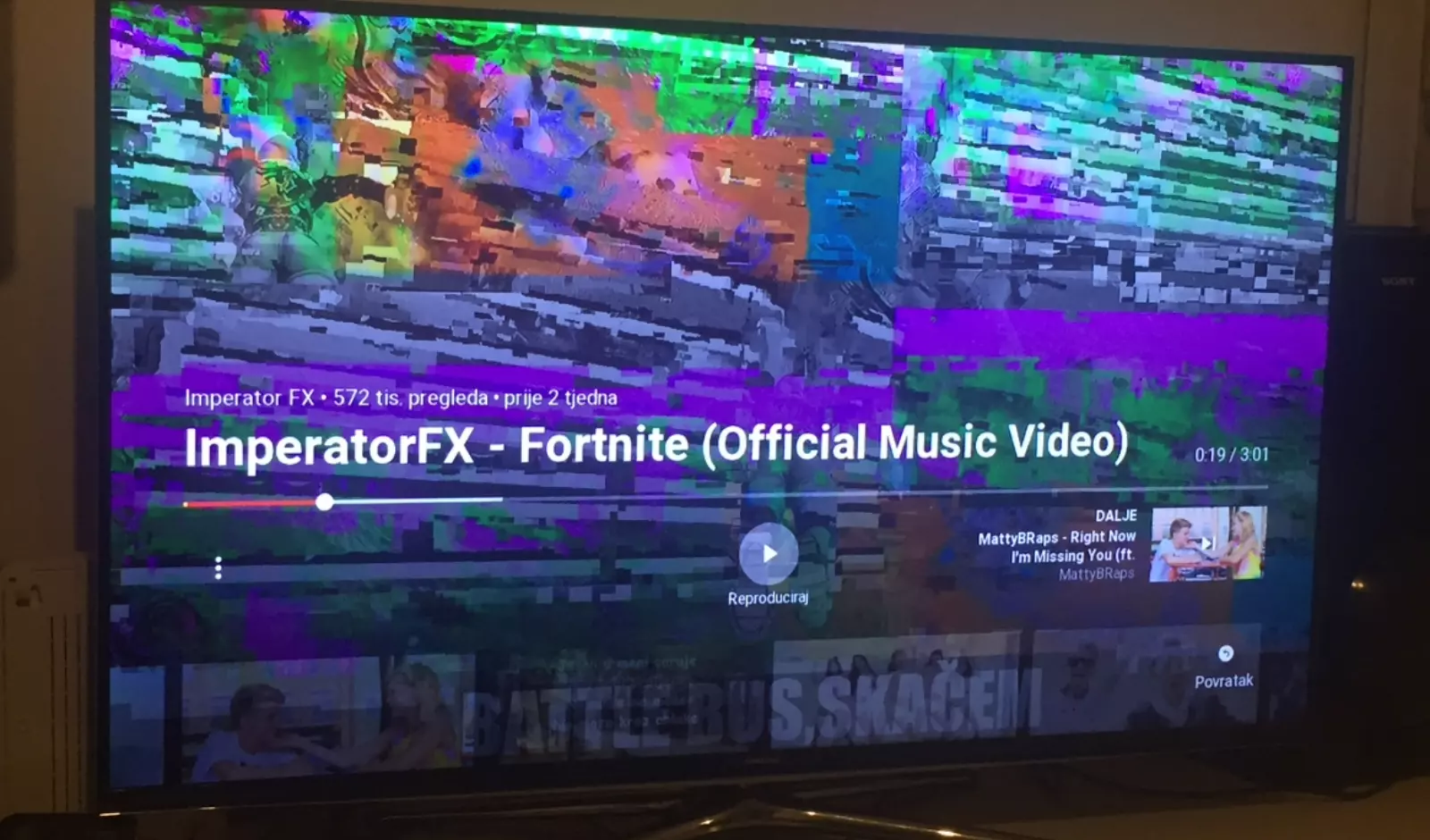Every month, I usually have to fix about 8 to 15 TVs.
Out of these cases, roughly 20% have common screen problems. These include:
- Backlight not working.
- Screen goes black, but the sound is fine.
- Cracked LCD panel.
- Audio delay, and more.
I typically charge $100 to $180 for fixing a TV backlight issue, $300 to $400 for an LCD panel problem, and $20 to $40 for other minor screen problems.
Why I’m telling this?
Because, if you’re a DIY enthusiast with some basic knowledge, you can save a lot of money.
In this article, I will discuss five common TV screen problems that many users have encountered and how you can fix them on your own.
Let’s move on…
Key Takeaways:
- Black Screen: Check the HDMI cable and Test the LED Backlight.
- Audio Lag: Check audio settings, update firmware, and ensure all devices are connected properly.
- Blurry text: Adjust screen resolution and font settings on your device.
- HDMI handshake: Power cycle the TV and check for firmware updates on both the TV and connected devices.
1) No Picture, Black Screen But The TV Is On
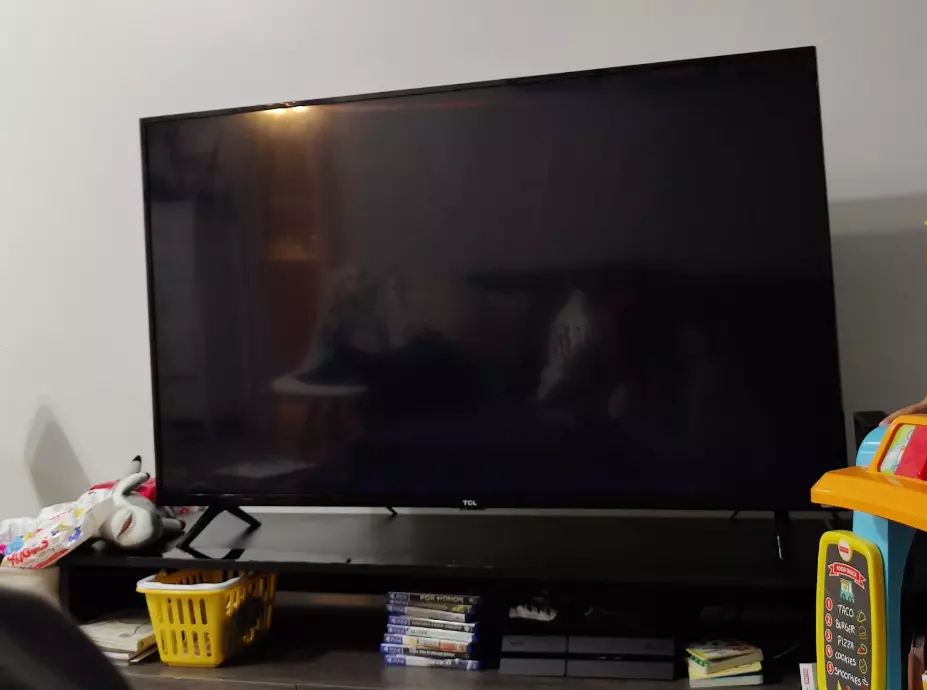
This is the most common issue among smart TV users, where the screen suddenly goes completely black, but the TV works.
This mainly happens for two reasons:
- TV isn’t receiving any proper signal from your HDMI-connected devices.
- TV’s LED Backlight has been damaged.
So, whenever you encounter this issue, you have to do the following two basic things;
First, ensure that your cable or satellite box is plugged in and turned on and that all the HDMI cables are securely connected to both the box and the TV.
Then, perform an HDMI Reset by following the steps below:
- Disconnect the TV from the power outlet completely.
- Similarly, disconnect all the HDMI-connected devices from the TV.
- Wait for 5 minutes.
- During this time, press and hold the TV power button for about 30 seconds.
- Once you are done, power the TV back on.
Now check whether the TV is working. If not, test the TV’s LED Backlight.
Here’s how:
- Close all the windows and doors and turn off all the lights to create a dark environment.
- Power on the TV and take a flashlight.
- Shine the flashlight at different angles across the screen and pay close attention to the edges and corners.
- If you observe a faint glow or images on the screen when the flashlight is directed at it, it indicates that the TV’s LED Backlight is malfunctioning.
However, if there is no response from the TV screen, even with the flashlight test, it might be indicative of a more serious problem with the TV, such as a faulty display panel, a bad T-con board, or even a faulty power supply board.
In a previous article, I wrote a detailed step-by-step guide on how you can diagnose a faulty backlight and repair it on your own.

If you are interested in doing this yourself, check it out at this [Link].
Note: This can also happen due to a faulty mainboard. Mainboard handles various types of input from inside and outside the device and displays them on the screen. If the image processing part of the mainboard is not working correctly, you might encounter this black screen problem.
2) Video Not Matching With Audio
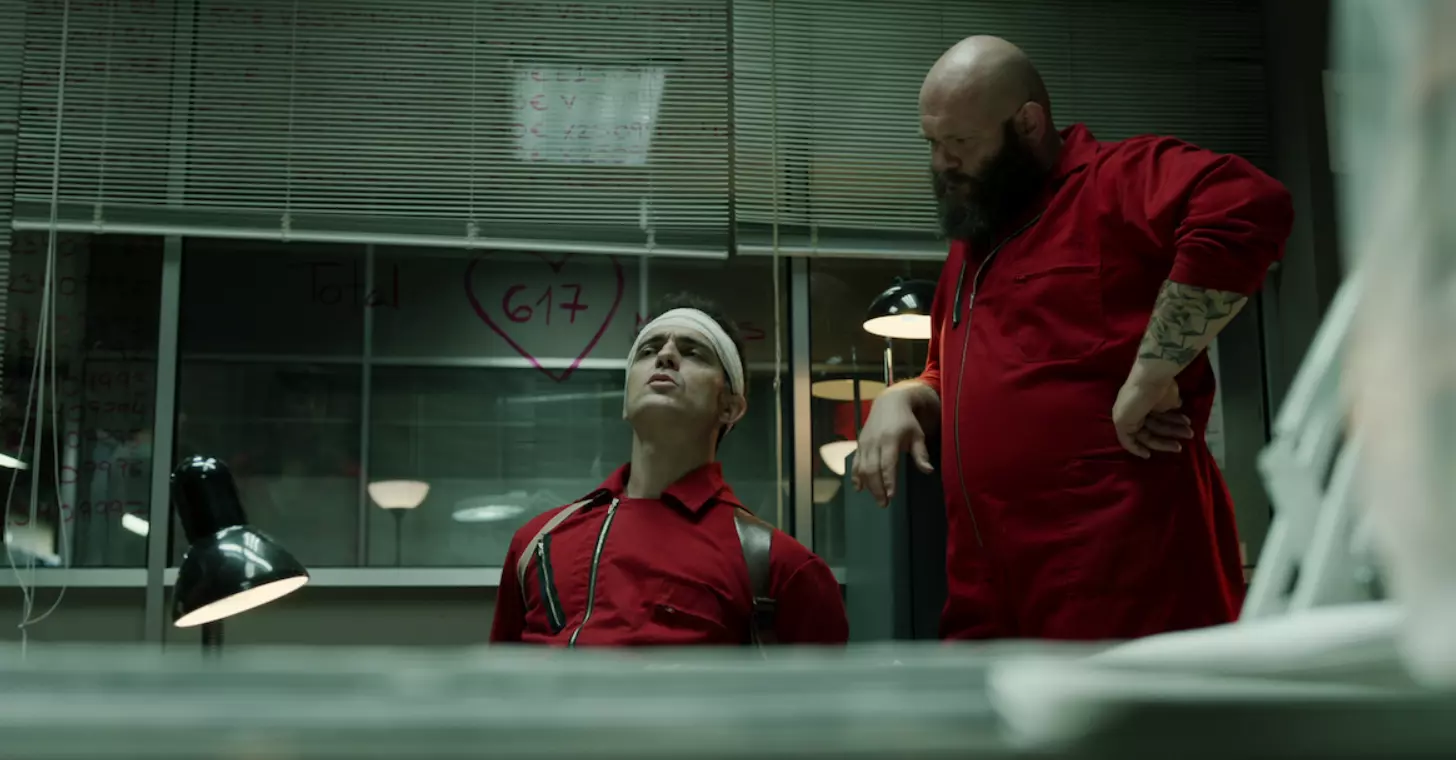
Sometimes, you may notice a delay in the audio when characters are speaking on the screen.
For example, you might be watching a thrilling action sequence in a movie, and the sound of an explosion or a punch lands a split second after you’ve seen the corresponding visual.
This lag between the video and audio is known as an “audio-video synchronization” or simply an “AV sync” issue.
However, there are various reasons why this happens:
- Your TV has a delay in processing the video signal.
- Your external sound system has a delay in processing the audio signal.
- Your cable or satellite box has a delay in transmitting the signal.
Most of the time, the solution is quite simple.
All you need to do is power cycle your TV, source device, and soundbar three times in a row.
If power cycling doesn’t work, enter the TV’s sound settings menu, and from here, turn on ‘AV Sync.”
That’s it…
3) TV Screen Looks Cracked But Isn’t
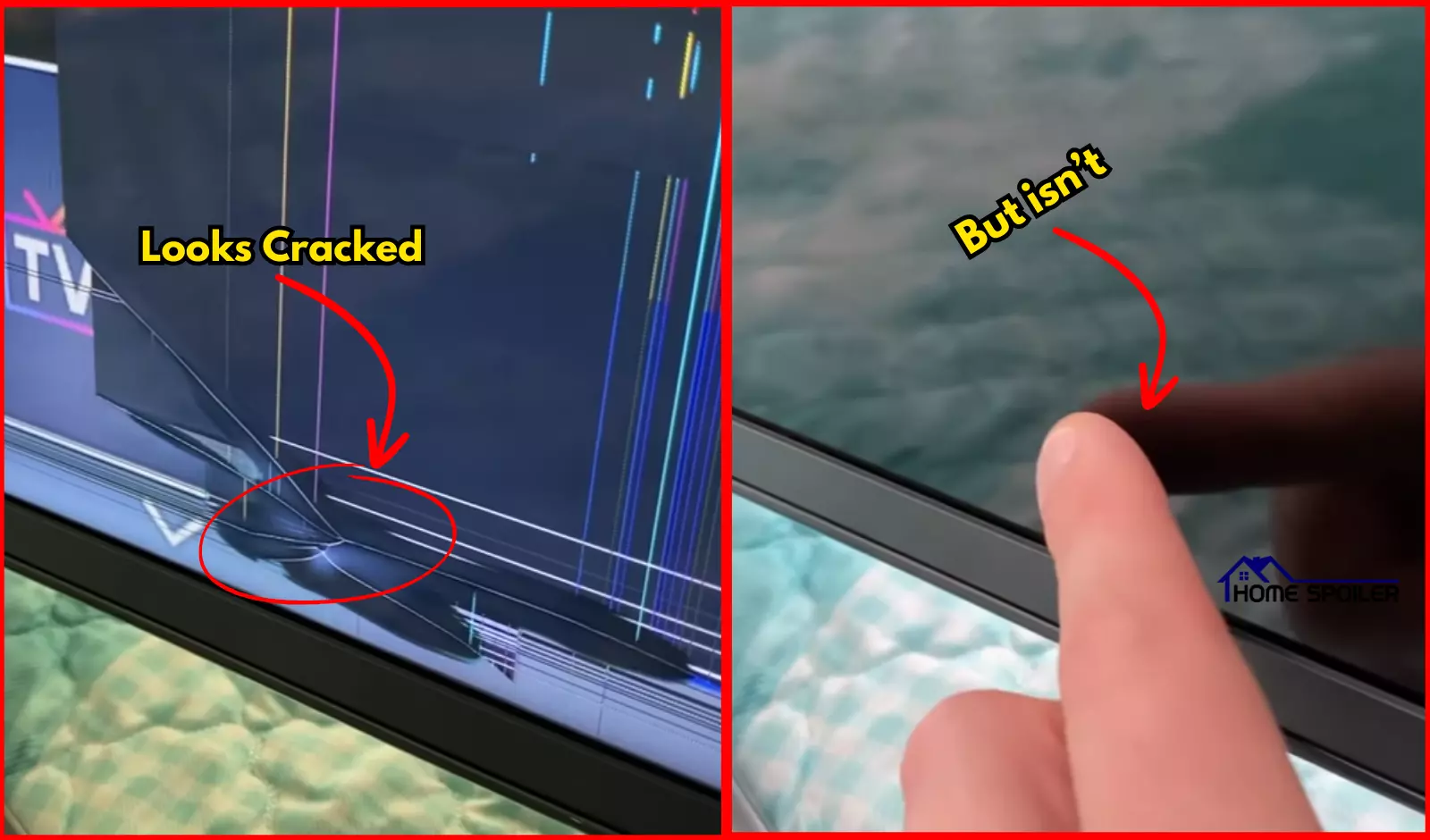
The problem is that when the TV is switched off, there are no visible cracks on the screen or the front panel.
However, when you turn it on, you see that the screen appears cracked, with lines spreading out like a spider’s web from a particular spot.
Take a look at the picture above; does it resemble your issue?
This problem can occur for several reasons:
- The inner screen of your TV might be damaged, not the outer one.
- Something might be wrong with the part of the TV that generates the picture.
- There could be an issue with your TV’s T-con board or the ribbon cable.
- Your TV might have encountered a system glitch, leading to screen distortions that resemble cracks.
So, what’s the solution?
Well, unless you’re an experienced DIY repair person, there’s not much you can do to fix this problem.
Why?
The most likely cause is a faulty LCD panel here and fixing it means taking apart the TV’s LCD panel and replacing it with a new one.
In some cases, it can be challenging to find a suitable replacement panel for your TV model, and even if you do, the repair can be expensive.
So, if your TV is still under warranty, contact the manufacturer.
But if it’s not, get in touch with a knowledgeable TV repair specialist and discuss the possible cost.
Remember: This issue can also be caused by problems with the T-con board, a faulty ribbon cable, or issues with the mainboard. The exact cause depends on the TV’s condition and appearance.
4) Picture Is Pixelating or Breaking Up
![]()
If you notice your TV picture turning into small squares or pixels, it’s a pixelation issue.
This can happen for two main reasons: a weak signal or a slow internet connection.
To solve this, get in touch with your cable or satellite provider and ask them to check for any transmission problems. You might also need to adjust your antenna or satellite dish for a better signal.
But if you’re streaming content online, make sure your internet connection meets the minimum requirements for your streaming service.
If your internet is consistently slow, try reducing the number of devices connected to your network or consider upgrading your internet plan.
5) Screen Is grainy
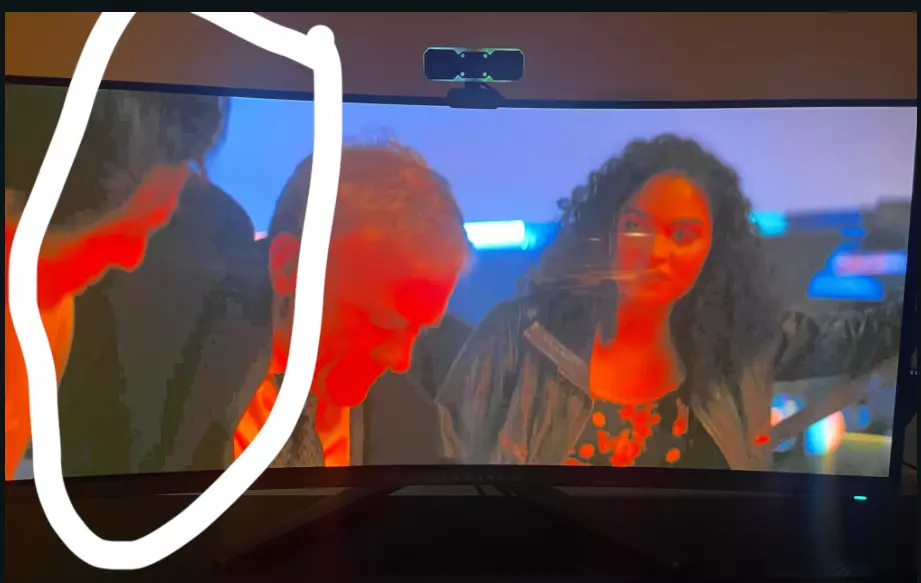
This typically happens due to calibration issues.
If you set the sharpness levels too high thinking that the picture will look more clear and vibrant, then you will encounter this issue.
Why?
To know this, you have to understand how the sharpness mechanism works.
When you set the sharpness levels too high, TV algorithm understands that it should enhance high-contrast edges to create a sharper image.
However, this can backfire.
Here’s why: First, TV’s smart system spots the sharp lines, like the edges of a character against a bright background. It then tries to make these lines stand out by making them even brighter, which can look cool but not always in a good way.
Instead of making things look better, it creates odd-looking outlines around objects or people which lead to “ringing” or “haloing” artifacts.
However, most modern TVs are already designed to display images in high definition with a certain level of sharpness that’s considered optimal for most content.
When you overdo it, you’re essentially pushing the TV to create sharpness where it’s not needed and making the picture looks hazy and even grainy.
So, for the clearest and most natural picture on your TV, set your sharpness to a neutral level like 50% or below, where no artificial edge enhancement is applied.
6) Half of the Screen is Darker Than the Other
Ever turned on your TV and noticed one side looks noticeably dimmer than the other?
This isn’t just an annoying quirk; it’s a sign something’s not right.
This issue is usually caused by a faulty LED backlight strip. These strips illuminate your TV’s screen, and when one or more LEDs fail, it can create an uneven brightness.
However, here is the reasons why your TV screen might flicker:
- Loose or Damaged Cables: A loose HDMI or power cable can cause screen flickering.
- Power Supply Issues: Fluctuations in power can cause your TV to flicker.
- Refresh Rate Mismatch: The refresh rate settings on your TV might not match the content or your connected devices.
The bad news is that fixing this usually involves opening up your TV and replacing the faulty LED strip.
It’s not the easiest DIY job, but it can be done if you’re handy and comfortable working with electronics.
Remember, safety first! Always disconnect your TV from the power source before attempting any repairs. If you’re not sure what you’re doing, it’s always best to consult a professional.
7) Screen Burn-In (Ghost Images)
Have you ever noticed faint outlines or “ghost images” of old logos or channel graphics lingering on your screen even when you’re watching something else?
That’s called screen burn-in, and it’s a common issue with OLED TVs.
OLED TVs have incredible picture quality, but they’re also susceptible to burn-in because of the way their pixels work.
If a static image is displayed for too long, it can permanently “burn” into the screen.
Preventing burn-in is key.
Avoid leaving your TV on the same channel or displaying the same image for extended periods. Most modern TVs have features like pixel shifting and screen savers that can help reduce the risk of burn-in.
Unfortunately, if your TV already has burn-in, there’s not much you can do to fix it yourself.
Some manufacturers offer screen refreshing features that might help, but in severe cases, you might need to replace the screen entirely.
F.A.Q.s
Q: How much does it cost to fix a TV screen?
The cost of fixing a TV screen depends on several factors, such as the type, size, model, and brand of your TV, the extent and nature of the damage, and the availability and location of the parts and labor.
Generally speaking, fixing a TV screen can cost anywhere from $100 to $700 or more.
Q: How long does a TV screen last?
The lifespan of a TV screen depends on several factors, such as the type, quality, usage, and maintenance of your TV.
Generally speaking, most TVs can last for about 5 to 10 years before they start showing signs of wear.

Abdul Kader, a handy guy and experienced founder of a TV repair shop in Gulshan, Dhaka, Bangladesh. He is mainly an expert in understanding and repairing different types of issues with Smart TVs and providing helpful insights on how to keep them in good working order. Read his Full Story.

